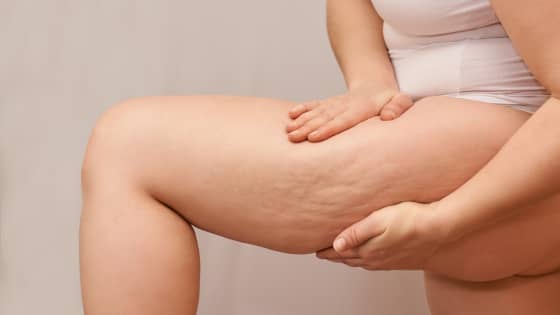Are one of the 90% of women or 10% of men affected by cellulite? Is cellulite dangerous? Does it have any negative health consequences?
Do you wonder if cellulite is dangerous or could it be something more problematic, like lipedema?
What is Cellulite
Cellulite is caused by fat layers built up in your skin. The amount of cellulite you have, and how noticeable it is can be based on your genes, body fat percentage and age.
As our culture has gotten more sedentary, cellulite has become an increasing problem. Women who live in more rural and agrarian cultures seem less prone to having cellulite. As physical activity in our culture has decreased, and our diets have changed, there has been an increase in cellulite and other health outcomes.
Most experts agree that cellulite is not dangerous, simply unattractive
Topical Treatments
Topical creams and ointments may help reduce the visibility of cellulite, but the effects may be short-term. Daily applications are required. Creams are said to tighten the skin to make it appear smoother and tighter.
Creams don’t remove cellulite but may help to reduce its appearance. Creams containing retinol may reduce the appearance of cellulite by thickening the outer layer of the skin.
Professional Treatment
If you’re looking for the best cellulite treatment in Sydney consider consulting a non-surgical body sculpting specialist.
A specialist can employ different methods to address cellulite. Ultrasound fat cavitation, radio frequency fat melting, body sculpting, cryolipolysis fat freezing, and muscle stimulation are all tools available to qualified therapists.
Lipedema
Lipedema is a serious condition that initially can look like cellulite. Whereas cellulite is harmless, lipedima, if left unchecked can have serious consequences.
Lipedema causes noticeable changes in the skin. Swelling of the limbs, particularly the legs can occur. It can be accompanied by chronic pain and can limit mobility, making it difficult to walk or get around. It often causes tenderness, pain or bruising in the affected areas.
Lipedema is considered a medical condition that requires treatment.
Treatment
Weight management is an effective treatment for lipedema. Eating a healthy diet and regular physical exercise can help prevent fat from accumulating.
Regular skin care, and keeping the skin moisturised can prevent dry painful skin from developing and leading to complications.
Compression socks and other bandages can be applied to help reduce swelling, pain and discomfort.
Medications can help reduce inflammation and swelling.
Liposuction and surgery can be done in more serious cases.
Lipedema Diagnosis
If you suspect you may suffer from lipedema you should consult your doctor. If your doctor does not have experience in this area, they should send you to a specialist.
There is no go-to test for lipedema. That limits diagnosis to physical examination and medical history. Regular body fat does not hurt, whereas pain is connected to lipedema. Also, people with lipedema have a clear difference in size between their unaffected feet and affected legs.
Eating a healthy diet and regular exercise can lead to improved outcomes for all types of diseases and should be your first line of defence against all types of illness.








